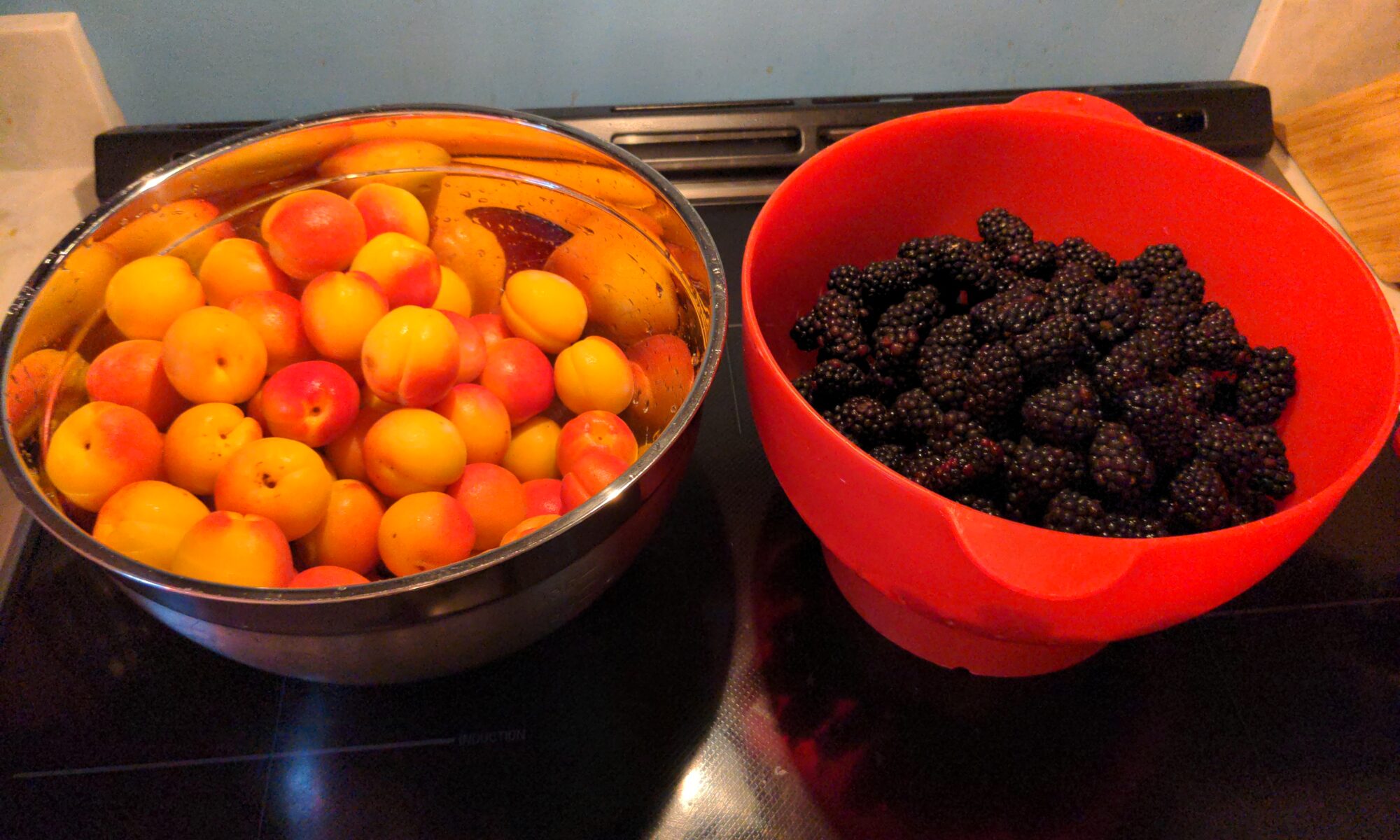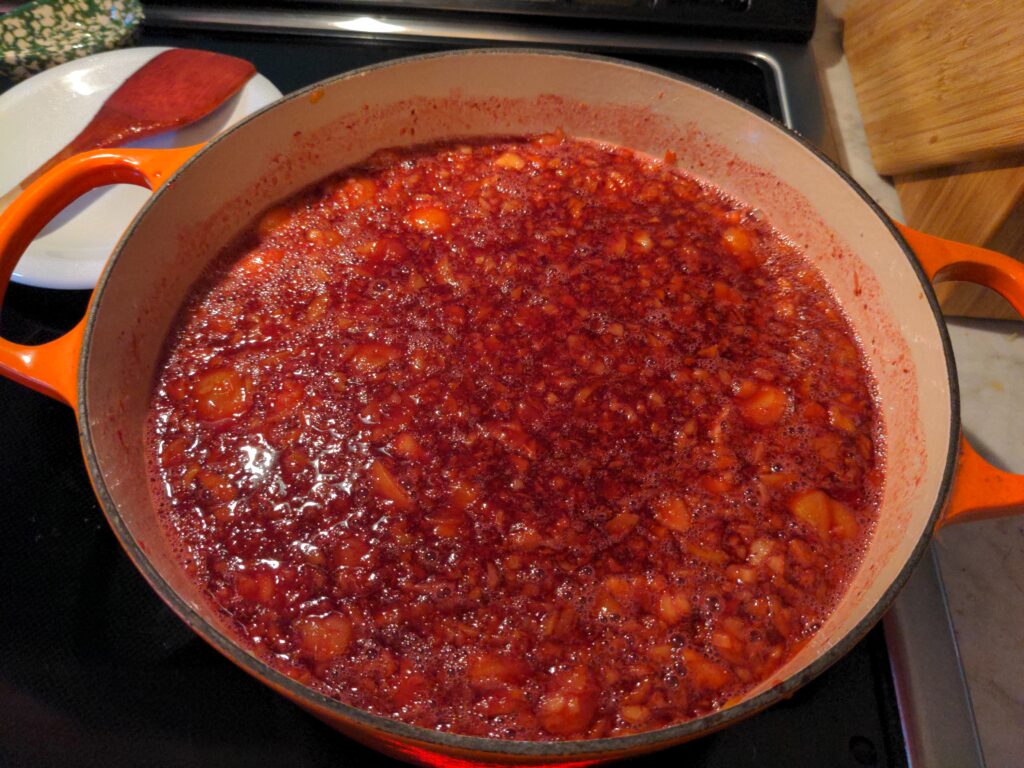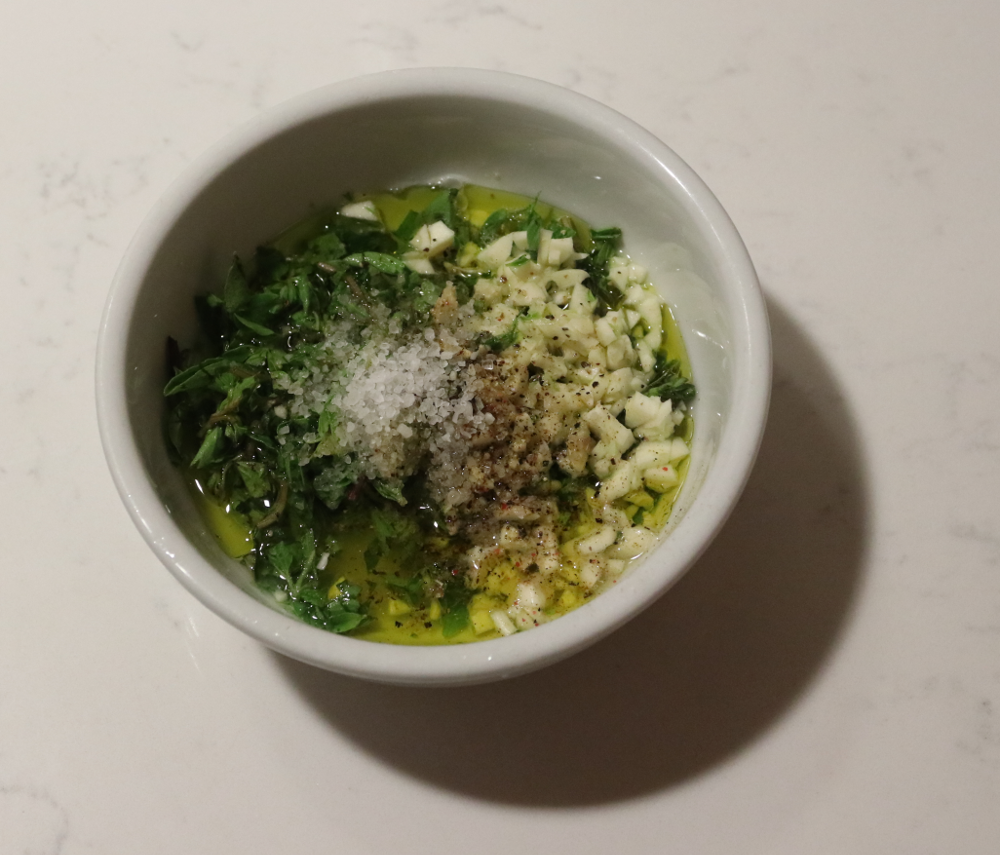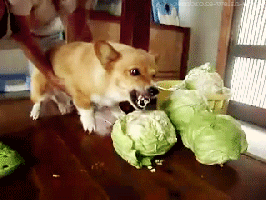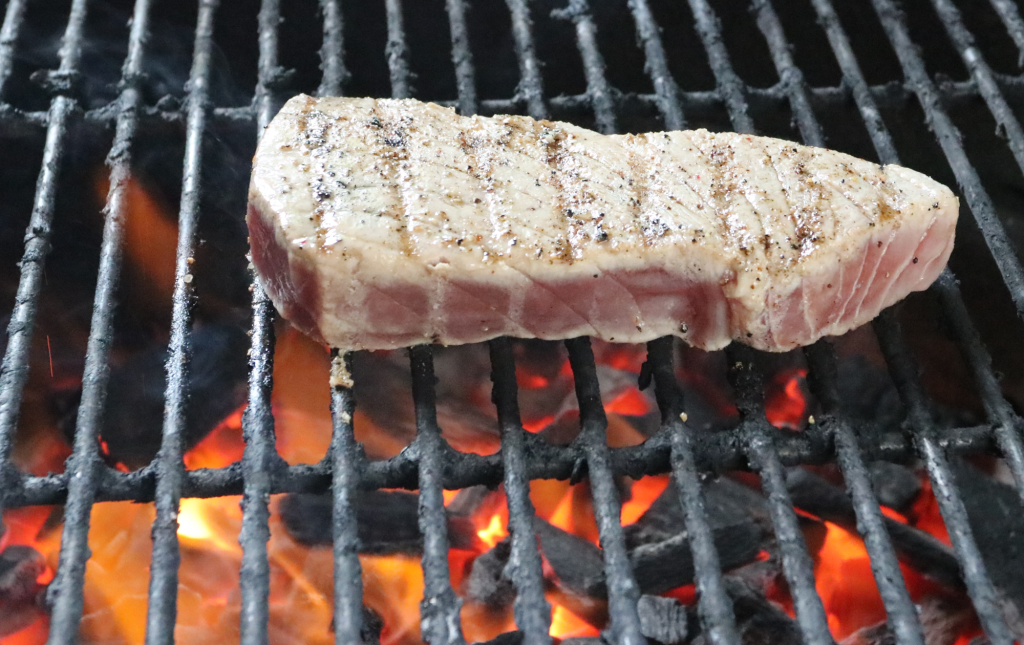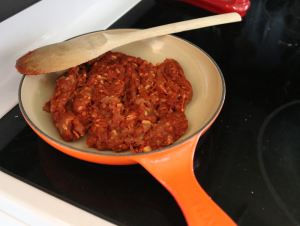I had a hard time getting my jam making process dialed in. For me, jam recipes can be confusing, primarily because:
- the different types of pectin available in many stores don’t correspond with how the recipes are written; and
- when we say that a recipe needs 4 cups of fruit, how exactly are we measuring 4 cups? Is the fruit mashed? Chunked? Pureed?
In this recipe, the fruit is blended to a rough liquid, and that’s what we use to measure volume. I use an immersion blender to process the fruit, but any blender will do. The ingredients in this recipe are keyed to the amount of fruit, primarily because that’s the hardest thing to know ahead of time.
I also use weights in this recipe because that’s an easier way for me to get the exact measurements I need. Obviously, to use weights, you need a kitchen scale. I use the OXO Good Grips scale, but this review of scales gives you a few different options.
If you don’t have a scale, the weights can be converted to volume.
- 1 tablespoon pectin = 11 grams
- 1 cup sugar = 200 grams
This recipe is great for peaches and nectarines, separately or in combination. If you want the jam to have some extra kick, add approximately 1/8 to 1/4 teaspoon of chipotle pepper per 1 cup of peaches, so 8 cups of peaches would have 1-2 teaspoons chipotle.
One other detail: a lot of peach jam recipes apparently have very strong feelings about peeling peaches. I’m very happy for them, and if you want to waste your time peeling peaches knock yourself out. This recipe does not call for peeling peaches. Personally, when making jam from white peaches, the skin gives the jam a deep rich reddish tint that is hard to achieve otherwise.
But hey – if you really want to peel your peaches, have at it.
Ingredients
- 1 cup peaches
- 11 grams powdered pectin (I use the Ball RealFruit Classic Pectin)
- 167 grams sugar
- 1/2 tablespoon lemon juice
- Bourbon (water can also work) – see instructions below
Instructions
1. Juice 1-2 lemons. Set the lemon juice aside
2. Take the pits out of the peaches and cut them into rough quarters. Don’t worry about being precise, as all the peaches will be blended.
3. Measure out approximately half the lemon juice you think you will need, and pour that over the peaches. Break up the large chunks with a stick blender, potato masher, or regular blender. Measure the volume of peaches, as this is what you will use to determine the amount or the other ingredients.
4. Now that you have a clear sense of the volume of your peaches, add the remaining lemon juice to the peaches. (ie, if you have 6 cups peaches, and you added 1 tablespoon lemon juice prior to blending, add an additional 2 tablespoons lemon juice to keep the ratio of lemon juice to peaches accurate).
5. In a separate bowl, measure out the sugar. Set this bowl aside.
6. In a separate bowl, measure out the correct amount of pectin. Spoon a small amount of the peach/lemon mix over the pectin. Add some bourbon or whiskey to the mix. Stir the ingredients together until the pectin is fully dissolved. If you are adding chipotle or any other spice, add it in with the pectin to ensure it dissolves fully.
7. Add the pectin/peach/bourbon blend back to the rest of the peaches. Heat on medium heat, then increase to medium-high to high heat, stirring constantly, to bring to a rolling boil.
8. Decrease the heat to add the sugar. Stir until the sugar dissolves, then return to medium-high to high heat to bring back to a rolling boil. Stir the mix regularly to constantly.
9. Once the mixture is at a rolling boil, keep it there for one minute, stirring constantly. After a minute, turn off the heat, and put the jam in jars.
10. If you are preserving the jam, proceed on with your preferred method of canning. Otherwise, cover the jam, put it in the fridge, and enjoy over the next few weeks!


